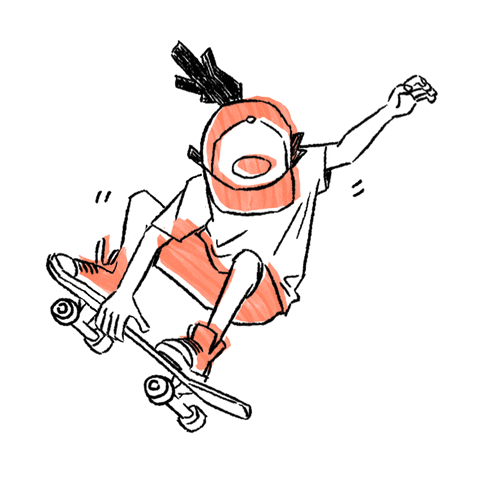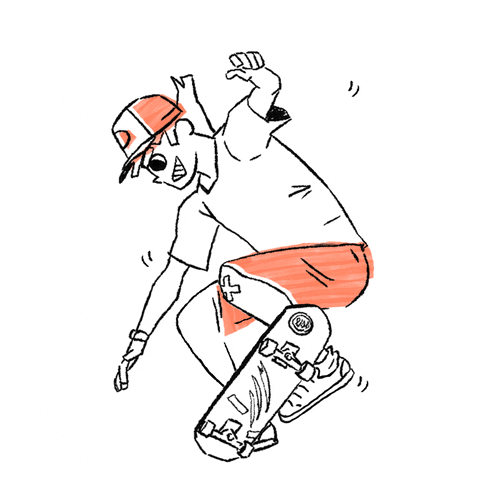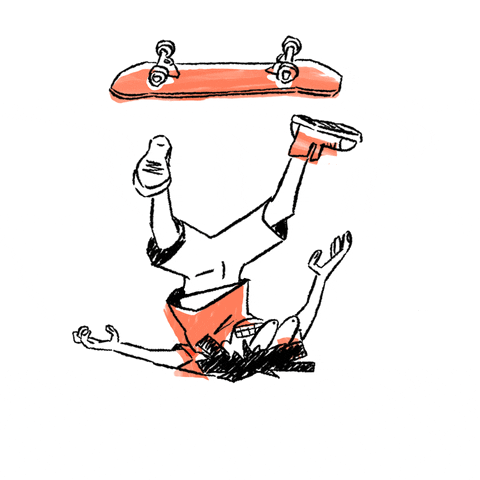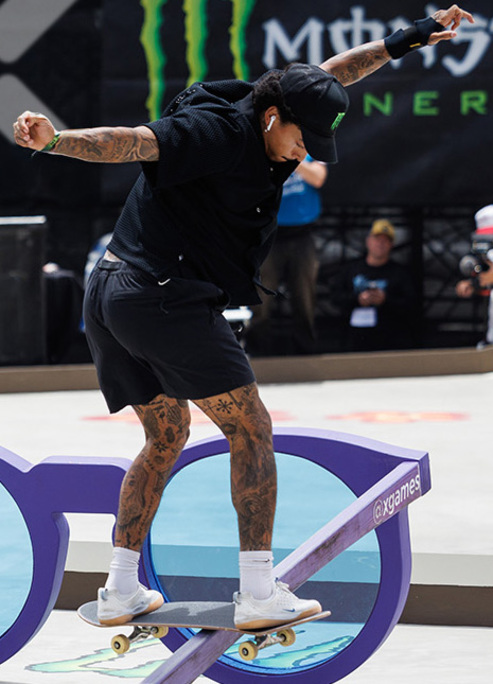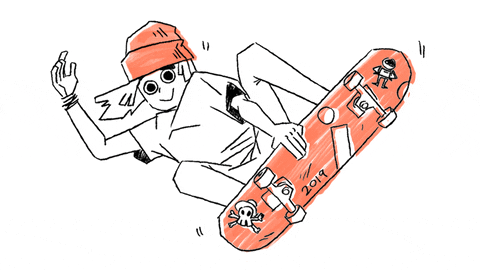
How to Choose Your First Skateboard
That first skateboard holds the gateway to ripping up skateparks, cruising neighborhood hills, or learning your first kickflip. No pressure, though!
But with so many deck types and components to mix and match, settling on a setup feels harder than sticking a gnarly landing.
Before you resort to deciding with the help of a coin flip simulator or leave it to a sketchy internet board builder, allow us to demystify this process so you roll away empowered. We'll talk about the styles, specs, and lingo so your inaugural shred stick reflects the real you.
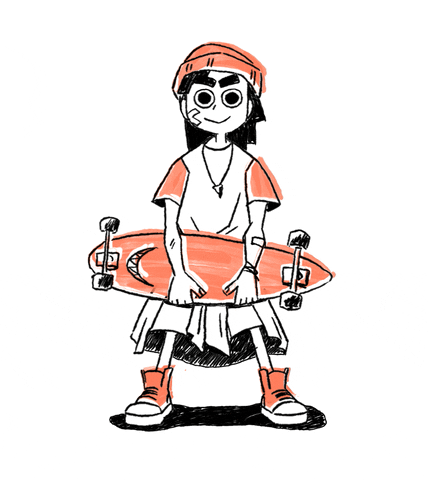
Types of Skateboards
Before jumping aboard, you have to decide what kind of terrain you want to shred. Each deck type has its own vibe and maneuvers ideal for unlocking your inner skater style.
Popsicle Decks
The OG standard skateboard. Symmetrical shape, snap pop, and lightweight for aerial moves.
-
Symmetrical shape - nose and tail are equal in size for bidirectional tricks
-
All-round master - ideal for street skating, parks, transition, vert, and tricks
-
Flip master flex - popsicle construction is nimble and snappy for ollies
-
Kickflip wizards - heelflips, kickflips, and all variations of flip tricks
-
Rulers of urban terrain - ledges, stairs, handrails, benches - no obstacle is safe 😈
Cruisers
Those throwback 1950s surf-style boards. Larger soft wheels to roll over cracks and carve down bike lanes.
-
Old school kicks - styled after 1950s California surfboard roots
-
Cruising for life - bigger soft wheels to smoothly roll over sidewalk cracks/rocks
-
Carving kings - wider trucks and flexy wood make tight turns seem buttery-smooth
-
Pumping prowess - gain momentum by shifting your weight from front to back
-
Hybrid potential - some allow truck/wheel upgrades for tricks
Longboards
Stretch it out! Extra long decks with a lower center of gravity for speed demons.
-
The long haul - extra large decks ranging from 38 up to 60 inches!
-
Stability stunts - lower ride height increases stability at speed
-
Slalom wizards - wiggle through tight cone courses at Mach 10
-
Downhill domination - traction and maneuverability to grip slopes
-
Dancing on concrete - bust flatground freestyle moves while rolling
-
Pushing distance - maximize push efficiency with a broader foot platform
Technical Spec Considerations
Skateboard anatomy time! Let this be your checklist when picking parts.
Deck
The wooden heart connects it all and channels your energy into the trucks, wheels, and pavement.
-
Width - 7.5-8.25 inches are typical. Go slim for flips or wide for stability
-
Length - popsicle 31-32 inches is standard, longboards push 38-60 inches+
-
Wheelbase - the distance between trucks affects turning ease
-
Shape - popsicle decks symmetrical, cruisers directional nose/tail
-
Concave - inward slope along the length for additional grip
-
Nose/Tail - angled up on both ends for tricks
-
Material - 7-9 ply Canadian maple wood is the gold standard
-
Graphic - the top is grip tape, and the bottom shows off style and design!
Truck
These hunks of metal connect the wheels and bearings to the deck. They govern steering and stability.
-
Width - closely match deck width for control
-
Height - low for stability at speed, high for responsive turning tricks
-
Hanger - axel piece that attaches wheels
-
Kingpin - revolving bolt and bushings for turning
-
Tightness - loose for deep carve ability, tight to prevent wheel bite
-
Material - Diecast aluminum alloy handles the grind
-
Style - traditional kingpin or surfskate for extra agility
Wheels
Wheels make direct contact with the pavement, determining your ride feel. Soft wheels smooth out bumps, while hard wheels pick up speed.
-
Diameter - 52-60mm is the standard size range
-
Width - fatter for stability, skinnier for tricks/flips
-
Durometer rating - measures urethane hardness (78a-101a)
-
Shape - round, oval, square, pucker (affect slide ability)
-
Core - inner wheel plastic/metal impacting durability
Bearings
Bearings enable the free spin of wheels for speed and extended roll. High quality equals fast momentum.
-
ABEC rating - precision grade from 1-9; higher is faster
-
Material - chrome steel, titanium, or ceramics for smoothness
-
Shields - protect inner bearings from dirt/debris
Putting It All Together
Building a complete from scratch might be overwhelming at first. Most beginners opt for pre-assembled board brands they connect with, then slowly customize from there.
If you want to curate each component individually, try this formula to start:
1. Pick Deck: Match shape/width/length to style goals
2. Select Trucks: Width/height that pairs with your deck
3. Choose Wheels: Balance smoothness vs. speed
4. Install Bearings: The higher the ABEC rating, the better
5. Have Shop Assemble! Unless you enjoy fine-tuning...
Once you get a feel for different setup sensations, you can start swapping parts. Lower/raise your deck, loosen/tighten trucks, small/big wheels, and all combinations to find your flow.
Here are some full custom combos to consider as starting points:
Street Sparring Popsicle
Nimble deck, hard wheel formula for park/street tricks.
-
Deck: Plan B Popsicle 8"
-
Trucks: Thunder Hollow Lights 145mm
-
Wheels: Spitfire Formula Four 99a 52mm
-
Bearings: Bones Reds
-
Hardware: Shorty's Allen Bolts
Cruising Commuter
Stable directional deck to eat up distance and cracks.
-
Deck: Landyachtz Dinghy Blunt 28.5”
-
Trucks: Paris Street 129mm
-
Wheels: Hawgs Mini Monsters 78a 60mm
-
Bearings: Bronson G3
-
Hardware: Khiro Phillips Pan Head
Downhill Daredevil Longboard
Lower platform for traction at speed and slidy wheels.
-
Deck: Loaded Tesseract Freeride Drop 39"
-
Trucks: Gullwing Sidewinder II
-
Wheels: Blood Orange Morgan 82a 65mm
-
Bearings: Zealous Ceramics
-
Hardware: Grip Tape Hardware
See how planning each element creates a harmonious whole? As your style progresses, you can evolve your setup's balance of power and agility. Make your choices count!


